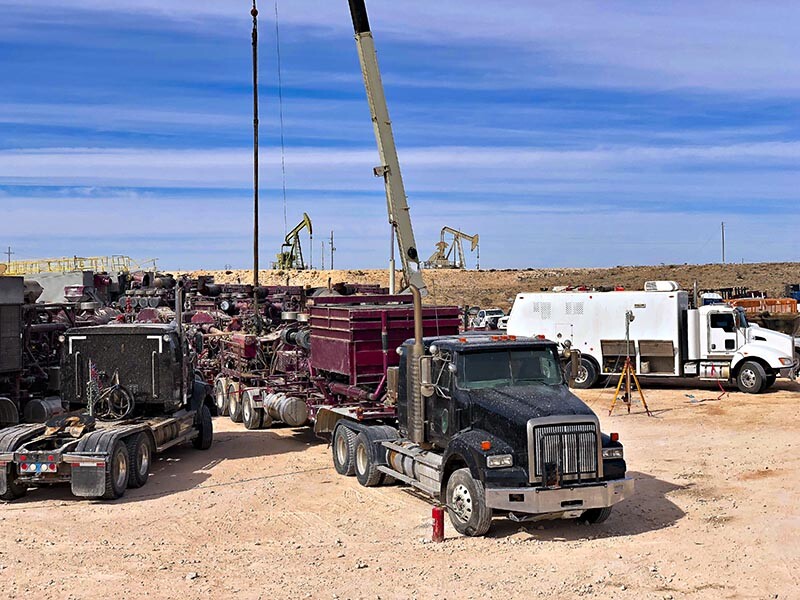First-quarter oil and gas business activity is showing record highs across several indicators. Prices received for services, oilfield service (OFS) companies’ operating margins, and industry labor indicators all reached new high marks for Dallas Fed survey’s 6-year history.
Dampening those were record highs in OFS companies’ input costs and exploration and production (E&P) companies’ costs for finding and developing resources and operating their leases.
Overall, 6-month outlooks improved significantly from Q4 2021, although the uncertainty index of the outlooks increased sharply from -1.5 to 31.9 over the same period.
The results of the quarterly survey by the Federal Reserve Bank of Dallas were released today for the region covering the Texas, southern New Mexico, and northern Louisiana region. Data were collected in mid-March and 141 energy firms responded, of which 91 were E&P firms and 50 were OFS.
Oil production increased at a fast clip, rising from an index of 19 in 4Q 2021 to 45.0. The natural gas index also increased 14 points to 40.0.
For a fifth straight quarter, costs increased for OFS and E&P firms. The overall business activity hit a 6-year high, as did E&P’s lease operating expenses and finding and development costs. A record-high index for input costs was seen for OFS.
All labor market indexes reached record highs, “pointing to strong growth in employment, hours, and wages,” the survey reported. Sixty-six percent of OFS companies expect to increase their number of employees in 2022 vs. 31% of E&P firms.
Small firms are aiming to expand their crude oil production by a median rate of 15%, outpacing the large companies’ 6%. More than half of the respondents attribute the restraint in growth despite high oil prices to investor pressure to maintain capital discipline, indicating some hard lessons were learned over the past few years.
The survey respondents on average expect a West Texas Intermediate (WTI) oil price of $93/bbl by year-end; Henry Hub natural gas prices are expected to be $4.57/MMBtu.
Forty-one percent of respondents believe the WTI price needed to boost production growth is between $80 and $99/bbl; an additional 20% believe $100 to $119 is sufficient, while a small portion said $120/bbl or higher. Nearly one-third of the respondents (29%) said growth will not be dependent on the price of oil.
Respondents’ anonymous comments shed light on several factors restraining capital and production growth.
E&P Companies
“The industry is facing serious supply issues for the materials needed to grow production. The supply-chain issues and shortage of materials are unprecedented. We are also facing serious workforce issues because a meaningful portion of the labor force left the industry during the downturn and due to the vilification of the oil and gas industry. The message from the White House, Capitol Hill, and Wall Street has been that oil and gas is a dying industry and one that needs to be abandoned. Even if funding were available and supply-chain issues were resolved, it is unlikely that the labor shortage will be resolved any time soon and simply by paying higher wages.”
“Private-equity capital for oil and gas is down 70 to 80 percent over the last several years. Is this a response to low-carbon and/or ESG-related interest by banks and investors, or is it in part to the market adjusting to an administration that made it clear from day one they do not support new oil and gas development and have put appointments in key agencies in place that support this view? It is probably both, but that still tells smaller public and private independents that they cannot rely on external capital, and that they should restrain their budgets accordingly, at a time when supply growth would certainly help.”
“Investors dumped huge funds into shale drilling only to discover that when oil prices dropped, very little value existed at the end of the day. Investors have demanded restraint and capital discipline of their client companies. Government posturing and increased regulations are severely hampering the entire industry. Permitting roadblocks and politically emplaced barriers should be removed as this is dampening the willingness of anyone trying to bring new investments to the industry, regardless of that investment being for a private or public entity.”
“Supply and demand are now subjected to significant domestic and international political and market conflicts and disruptions, resulting in a significant challenge to develop credible strategic assessments and planning. This has resulted in a preference for risk avoidance with respect to strategic capital commitments.”
OFS Companies
“We have the rigs but can’t find employees. However, oil companies have to understand that oilfield services and, in particular, onshore land drilling contractors have to be paid a livable rate to justify the enormous capital cost of running, upgrading and crewing a modern onshore drilling rig.”
“The lack of people to work, and the delivery and cost of pipe, frac sand, cement, etc., are all concerns for our business. It will take quite of bit of time for growth to happen. There is also investor pressure.”
“… the primary reason that publicly traded oil producers are restraining growth despite high oil prices is a combination of investor pressure, ESG issues, government regulation, and lack of growth capital. … Spending will increase with improved cash flow, but I don’t see companies raising capital and going into debt to invest in production growth.”
“Discipline continues to dominate the industry. Shareholders and lenders continue to demand a return on capital, and until it becomes unavoidably obvious that high energy prices will sustain, there will be no exploration spending.”


